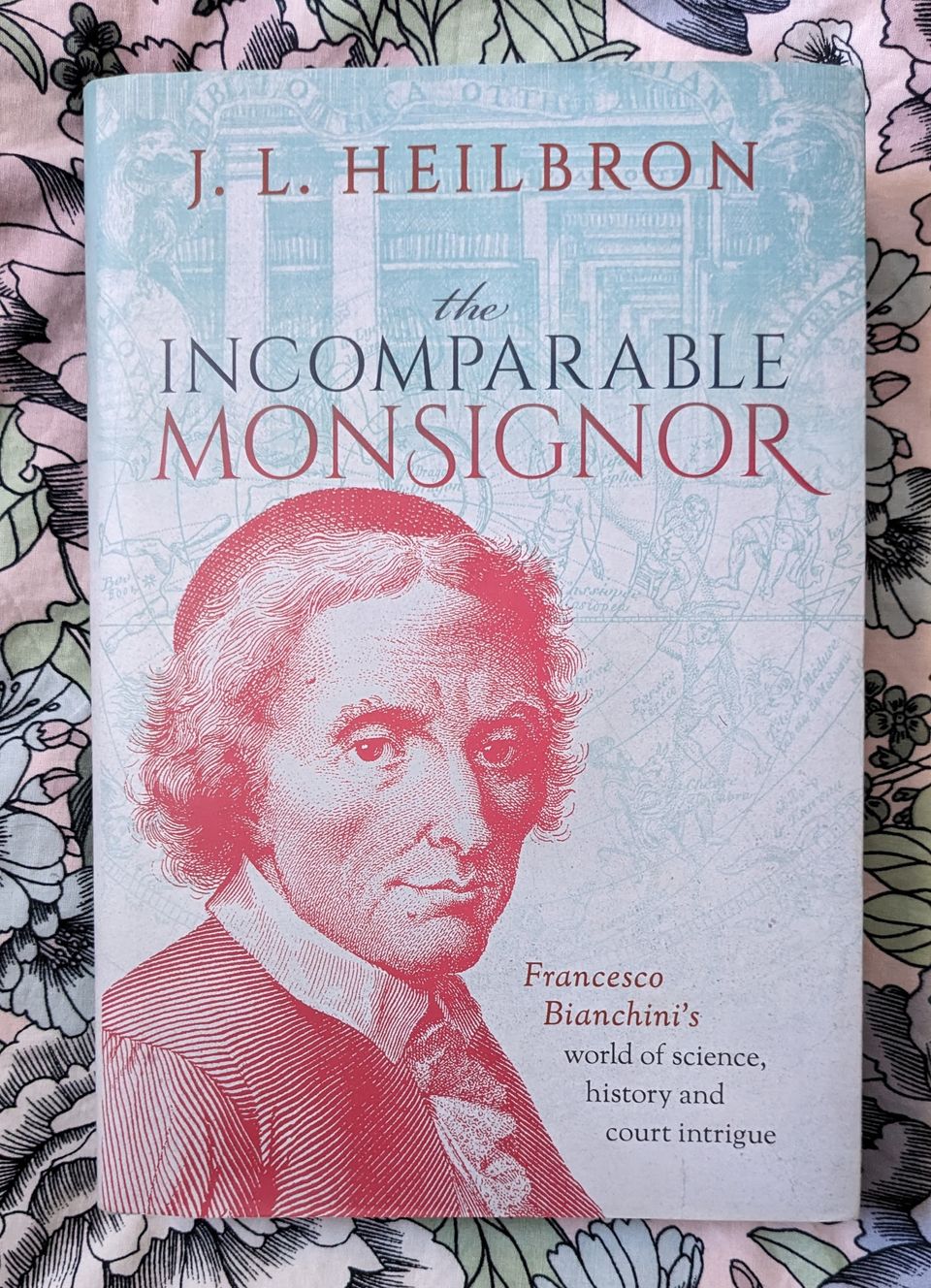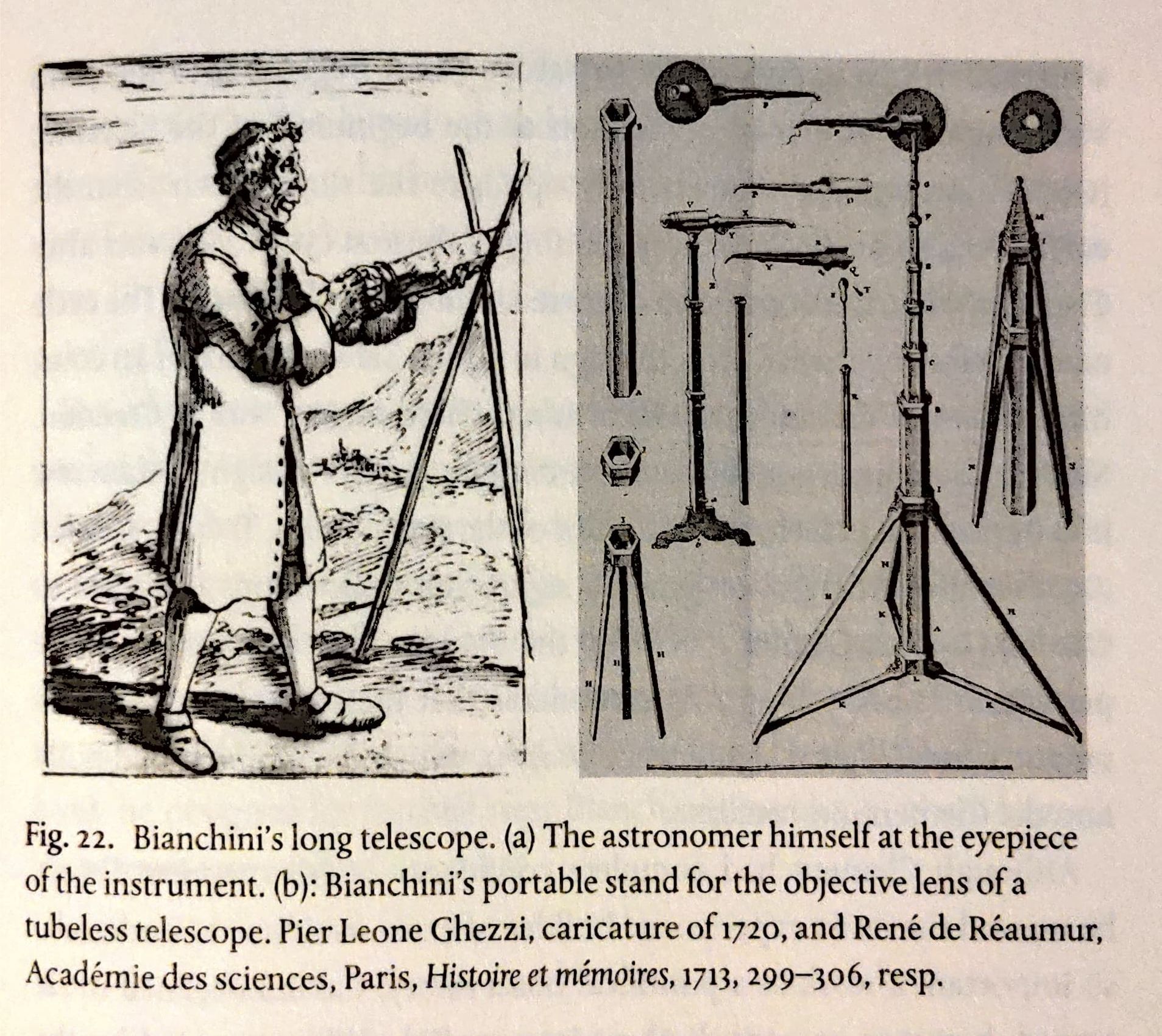Book review: The Incomparable Monsignor

What do you do after you've written to definitive biography of Galileo? You chronicle the lesser astronomers, of course, and so JL Heilbron gives us his account of the life of Francesco Bianchini – astronomer, philosopher, antiquarian, papal agent, Jacobite courtier and "greatest Italian of the 18th Century" – in The Incomparable Monsignor.
But why was he the greatest? A few recurring themes emerge in Heilbron's biography of the churchman.
Like Galileo, Bianchini was a polymath with an affinity for the fisicomatematico who applied his talents to a wide spectrum of endeavours. As administrator, he repaired the aqueducts of Rome. As historian, he used records of astronomical observations to date the events of antiquity with fresh precision. As inventor, he developed a portable telescope that he was able to show off in Paris and London. As antiquarian, he surveyed the ruins of Domitian's palace on Palatine Hill a reconstructed its facades with careful skill. Useful in all contexts, he was able to find willing patrons with ease and rise to the pope's inner circle.

But unlike Galileo, Bianchini knew how to play the diplomatic game. Literally, in that he served as a courtier for James II, and as papal agent in France and England, but also figuratively. As Heilbron puts it, Bianchini was able to locate his entire intellectual output within the envelope of acceptable Catholic doctrine while constantly expanding that envelope. Thus he was able to act as a censor while avoiding the censors, to study the heliocentric model while admitting no opinion in public, to miraculously maintain a friendship with both Leibniz and Newton (and keep a careful opinion on which mathematician invented the calculus).
This all makes Bianchini doubly fit as the subject for a biography. Firstly, because his life was eventful. But secondly, and more importantly, he gives us a tantalising glimpse into the intersection of religion, politics, science and the arts in Christendom in that long period between Reformation and Revolution, complicating any simplistic image we might have of Catholic anti-science but not quite exonerating the Church either.
As a well-respected science historian Heilbron is trusted guide through this period. Overly familiar with the subject matter, he skips along through it all with ease, segueing from topic to topic with glib humour. The dowager Queen of Poland goes on a pilgrimage to Rome with her father and sons in tow. "They were an unprepossessing lot. The adolescent lads when released in Rome ran wild. [Her] father did not behave much better." An anonymous manuscript claims that the earth was populated prior to Adam. "The book aroused an ecumenical spirit: Jews, Protestants, and Catholics all condemned it." An acclaimed painter, responsible for the restoration of Raphael's frescos, designed his own tomb "where he took up permanent residence in 1713." A sargeant "found himself" surveying land south of the Danube for the Austrian army: "Tartar horsemen also found him and sold him to a commander of the sultan's army."
With similar economy, Heilbron recounts the comings and goings of the Spanish War of Secession, James the Second's failed attempts to assert his rights as pretender to the English throne, and the various administrative styles of the relevant popes (and the politicking that went into their selection). Likewise, Heilbron is meticulous when reproducing the mathematical diagrams and treaties upon which Bianchini wove his craft. It's a rich experience for the attentive reader; however, if you glaze over one or two sentences you'll quickly fall into confusion.
An Incomparable Monsignor isn't the first book I'd recommend on the early modern era, or even the first I'd recommend by JL Heilbron (his aforementioned biography of Galileo being his magnum opus). But for those wanting to get a flavour of Italian society, papal maneuverings and scientific endeavours in the 18th Century then this is a worthy history from one of the leading scholars in the field.

Comments ()